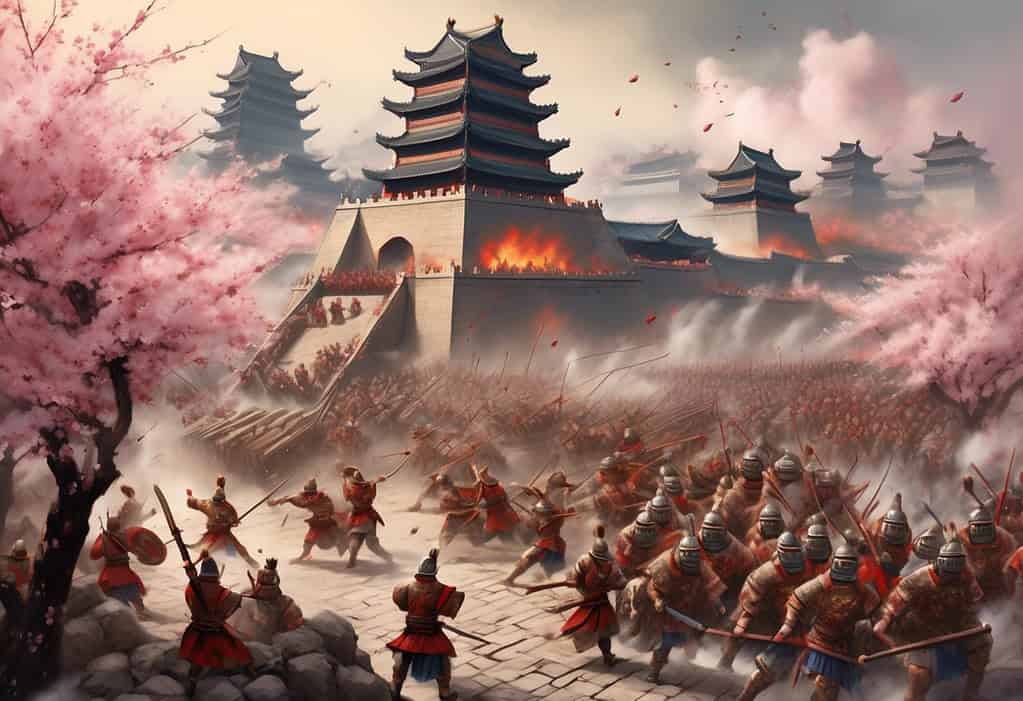The Warring States Period (475-221 BCE) was a time of conflict in ancient China. It was marked by fierce battles between rival states vying for power. This period saw the rise of military strategies and political philosophies that would shape Chinese history. The eventual unification of China under the Qin Dynasty marked the end of this tumultuous era.
Summary List
- The Warring States Period was a time of intense warfare and political turmoil in ancient China.
- It lasted from 475 BCE to 221 BCE and marked the end of the Zhou Dynasty.
- During this time, seven powerful states fought for control over China, leading to frequent battles and shifting alliances.
- Important philosophical and military texts, such as Sun Tzu's "The Art of War," were written during this period.
- The Warring States Period eventually ended with the unification of China under the Qin Dynasty in 221 BCE.
Games And Apps
Learning Modules
Battle of Jinyang (453 BCE)
The Battle of Jinyang in 453 BCE was a pivotal moment in Chinese history, where the states of Jin and Wei clashed in a fierce struggle for power. With strategic maneuvers and fierce combat, this battle would ultimately shape the future of the region for years to come.
I Want To Learn This!Siege of Chengzhou (443 BCE)
In 443 BCE, the Siege of Chengzhou marked a pivotal moment in ancient Chinese history as the powerful State of Qi launched a fierce attack on the city, testing the strength and resilience of its defenders. With strategic maneuvers and relentless determination, both sides fought fiercely for control, shaping the fate of the region.
I Want To Learn This!Battle of Yanling (375 BCE)
The Battle of Yanling in 375 BCE was a pivotal conflict between the states of Chu and Wei during the Warring States period of ancient China. With strategic maneuvers and skilled leadership, the outcome of the battle would determine the balance of power in the region for years to come.
I Want To Learn This!Battle of Maling (342 BCE)
The Battle of Maling in 342 BCE was a pivotal conflict between the states of Qin and Wei during the Warring States period of ancient China. Fought with strategic brilliance and fierce determination, this battle would ultimately shape the course of history for both kingdoms.
I Want To Learn This!Battle of Changping (262 BCE)
The Battle of Changping in 262 BCE was a brutal conflict between the states of Qin and Zhao that lasted for three days. It resulted in a devastating loss for Zhao and marked a turning point in the Warring States period of Chinese history.
I Want To Learn This!Battle of Guiling (241 BCE)
In 241 BCE, the Battle of Guiling marked a pivotal moment in Chinese history as the Qin dynasty faced off against the Chu kingdom. With strategic tactics and fierce combat, the Chu forces emerged victorious, changing the course of the ancient world forever.
I Want To Learn This!Treaty of Shimonoseki (221 BCE)
The Treaty of Shimonoseki, signed in 221 BCE, marked the end of the conflict between the Han and Qin dynasties in ancient China. This pivotal agreement established new boundaries and paved the way for a period of peace and stability in the region.
I Want To Learn This!Siege of Qi (221 BCE)
The Siege of Qi in 221 BCE was a pivotal moment in Chinese history, marking the end of the Qin Dynasty and the beginning of the Han Dynasty. As the city of Qi faced invasion, alliances were tested and loyalties questioned, leading to a dramatic and bloody battle for power.
I Want To Learn This!Battle of Julu (207 BCE)
The Battle of Julu in 207 BCE was a pivotal moment in Chinese history, where the outnumbered forces of the Han Dynasty led by Liu Bang defeated the powerful Qin army. This victory marked the beginning of the end for the Qin Dynasty and set the stage for the rise of the Han Dynasty.
I Want To Learn This!Battle of Gaixia (202 BCE)
The Battle of Gaixia in 202 BCE was a decisive conflict between the forces of Liu Bang and Xiang Yu during the Chu-Han Contention in ancient China. With strategic cunning and fierce fighting, Liu Bang emerged victorious, solidifying his power and ultimately becoming the first emperor of the Han Dynasty.
I Want To Learn This!












